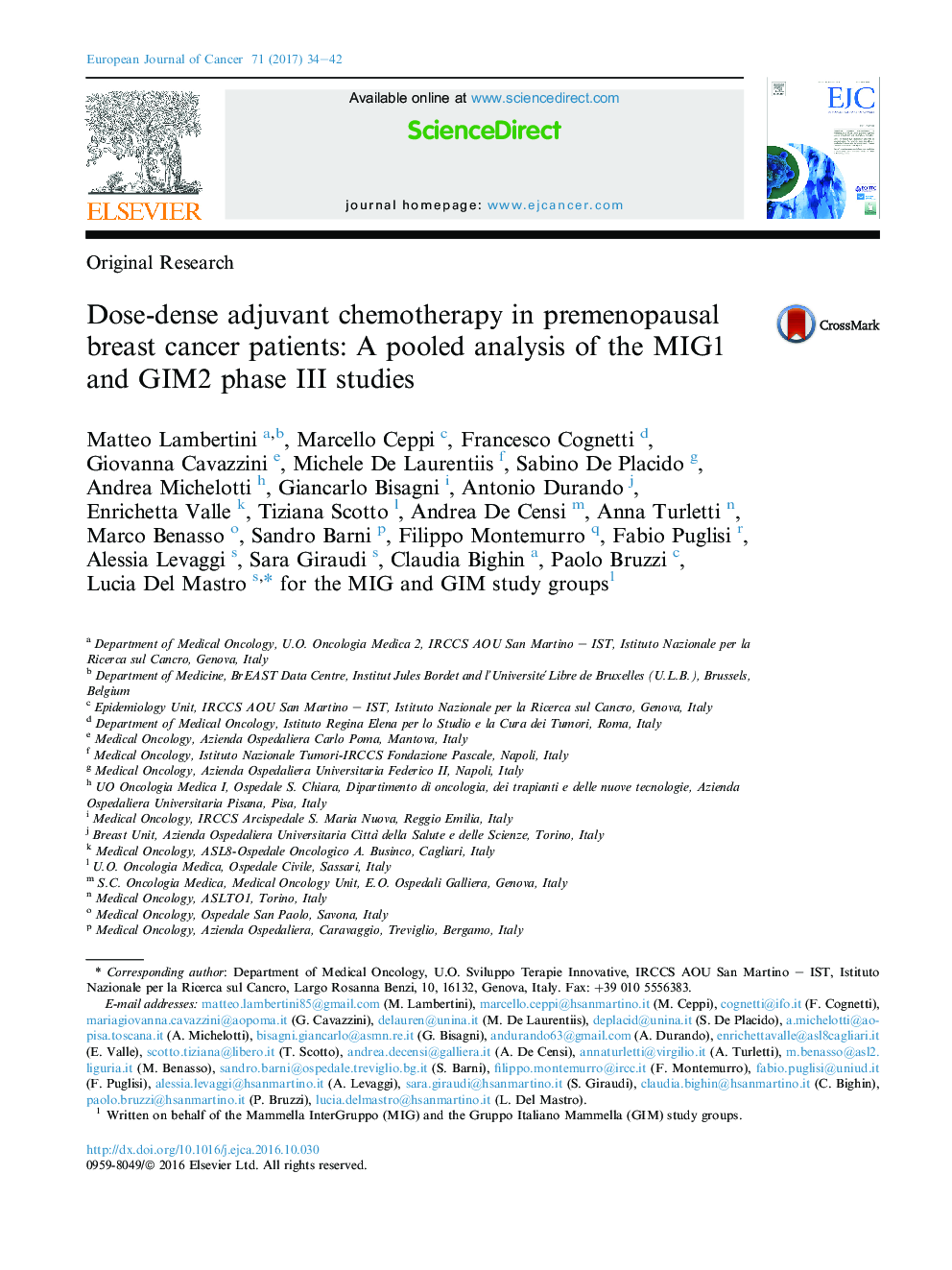| کد مقاله | کد نشریه | سال انتشار | مقاله انگلیسی | نسخه تمام متن |
|---|---|---|---|---|
| 5526794 | 1547062 | 2017 | 9 صفحه PDF | دانلود رایگان |

- No evidence exists to recommend a specific chemotherapy regimen in young breast cancer patients.
- In premenopausal women, chemotherapy can cause treatment-induced amenorrhoea and infertility.
- We evaluated efficacy of dose-dense chemotherapy and risk of amenorrhoea in premenopausal women.
- Dose-dense chemotherapy significantly improves survival in high-risk breast cancer patients.
- Dose-dense chemotherapy is not associated with increased risk of treatment-induced amenorrhoea.
BackgroundNo evidence exists to recommend a specific chemotherapy regimen in young breast cancer patients. We performed a pooled analysis of two randomised clinical trials to evaluate the efficacy of adjuvant dose-dense chemotherapy in premenopausal breast cancer patients and its impact on the risk of treatment-induced amenorrhoea.Patients and methodsIn the MIG1 study, node-positive or high-risk node-negative patients were randomised to 6 cycles of fluorouracil/epirubicin/cyclophosphamide every 2 (dose-dense) or 3 (standard-interval) weeks. In the GIM2 study, node-positive patients were randomised to 4 cycles of dose-dense or standard-interval EC or FEC followed by 4 cycles of dose-dense or standard-interval paclitaxel. Using individual patient data, the hazard ratio (HR) for overall survival by means of a Cox proportional hazards model and the odds ratio for treatment-induced amenorrhoea through a logistic regression model were calculated for each study. A meta-analysis of the two studies was performed using the random effect model to compute the parameter estimates.ResultsA total of 1,549 patients were included. Dose-dense chemotherapy was associated with a significant improved overall survival as compared to standard-interval chemotherapy (HR, 0.71; 95% confidence intervals [CI], 0.54-0.95; p = 0.021). The pooled HRs were 0.78 (95% CI, 0.54-1.12) and 0.65 (95% CI, 0.40-1.06) for patients with hormone receptor-positive and -negative tumours, respectively (interaction p = 0.330). No increased risk of treatment-induced amenorrhoea was observed with dose-dense chemotherapy (odds ratio, 1.00; 95% CI, 0.80-1.25; p = 0.989).ConclusionDose-dense adjuvant chemotherapy may be considered the preferred treatment option in high-risk premenopausal breast cancer patients.
Journal: European Journal of Cancer - Volume 71, January 2017, Pages 34-42